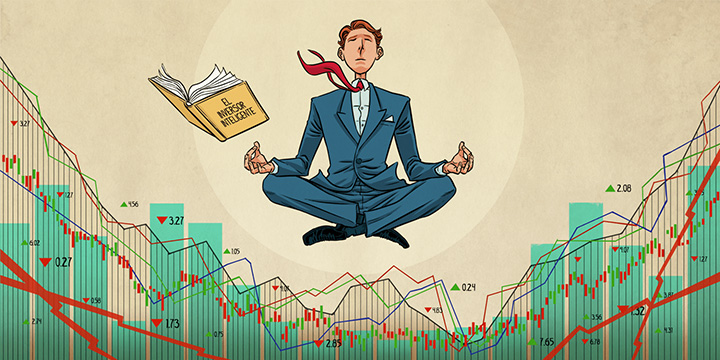My experience as an investor began in 2005. I’d never invested on the stock market before, which was why my bank advised me to start out with investment funds, as they were run by professionals and involved less risk. My knowledge of investing was ZERO, and that year all the advantages of equity funds were very tempting.
I invested a sum which – at the height of the property bubble – did not get me much. Everything seemed to be going fine until 2008 dawned, and suddenly everything changed. My earnings went up in smoke and I gradually began losing. Everything looked bleak at the time – companies seemed to be worth peanuts and the world was going down the plughole. Yes, and that was exactly where it looked like my money had gone, because all you could hear everywhere was the word CRISIS!!!
As I said, I began gradually losing, until the losses hit 50% and I went into PANIC mode. At that time it looked like the game was up. I regretted ever having got into that mess, but I’d done it and I had to face up to it.
I was invited by the managers of the investment fund to go to their annual conference, and I decided to attend to find out more about what was going on. They told us all about investing in companies, and I was struck by the passion with which Francisco García Paramés defended investments and valuations. I understood everything they said in that conference about investment, valuation and the times we were living through. So I took a leap of FAITH and decided to invest some money in the fund again.
Above all I realised the difference between value and price, and how the market didn’t distinguish between companies that were highly indebted and those whose business was clean. They were all presented as being the same.
The best example I heard at that conference was BMW. I remember he said that the share price was scarcely worth the value of the factories and the financing it had. He said that BMW’s valuation was laughable and that he had very rarely come across companies that were so undervalued. He gave the example that the share price gave double the profits, that is, it was as though you bought a house and then the tenants paid it off for you in two years.
He also talked about their profit margins, which were the highest in the sector. He added that the time we were going through was an isolated set of circumstances, and although it felt like the world would end the next day, we were still going to need the services provided by the companies we were investing in: cars, lifts, etc. Finally, he said that although the spotlight was on the United States and the European Union, there were other markets like China, India and so on that would drive that consumption and become players to reckon with.
Emotions and moods
I have to admit that it didn’t feel great when the fund fell again and I carried on investing money.
During that time I found out more about the world of investment, and I read a book that everybody was talking about: “The intelligent investor”. There I saw clearly that investments in the stock exchange depend significantly on emotions and moods, so I followed the method of investing regular amounts without worrying about my mood or about the markets.
I didn’t know what compound interest was until I discovered how it worked when the fund recovered its initial value, and when the money I’d been investing regularly gradually increased. It’s very easy to understand: the contributions that I had been making at the time the fund was lowest, what I was doing without realising was reducing my average purchase price and so the average return on my portfolio would improve faster, that is, the compound interest was working. As I continued making contributions, the compound interest was working and is always working – not only on what I was contributing, but also on what had been generated before.
I also understood that you need to take the long view with investments, and that it’s a better time when the market falls 30% than when it rises 30%. And above all, I’ve gradually discovered what it means to invest in value, and that the objective values that Francisco García Paramés defended in 2008 gradually became a reality over time.
Of the total amount of money I invested I obtained a return of nearly 120%. The lowest moment I bought shares was when the fund’s net asset value was 50 euros, and when I materialised the gains the net asset value was 158 euros.
Did you find this useful?
- |







